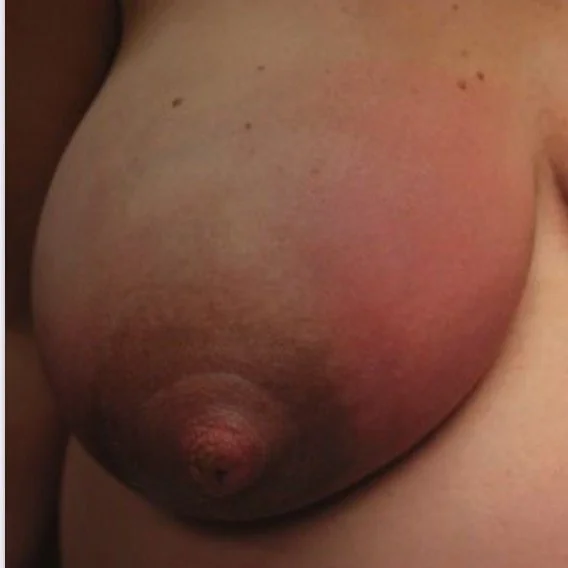Mastitis: Causes, Symptoms, Treatment & Prevention
Mastitis is a common yet often distressing condition that affects breastfeeding women, causing pain, swelling, and flu-like symptoms. While it can be challenging to manage, early treatment and the right support can make a significant difference in recovery. At Magnolia Midwifery Service, we help mothers navigate breastfeeding challenges, providing expert advice and practical solutions.
What Is Mastitis?
Mastitis is an inflammation of the breast tissue, often caused by an infection. It usually occurs in breastfeeding women but can also develop in non-breastfeeding individuals.
Types of Mastitis:
Non-infectious Mastitis – Occurs due to milk stasis (blocked ducts) and is not caused by bacteria.
Infectious Mastitis – Develops when bacteria enter the breast, often through cracked or sore nipples.
What Causes Mastitis?
Several factors can contribute to mastitis, including:
Poor Milk Drainage: If milk is not effectively removed from the breast, it can build up and cause engorgement or a blocked duct.
Incorrect Latch or Feeding Position: If your baby is not latching properly, it can lead to inefficient milk removal, increasing the risk of mastitis.
Nipple Damage: Cracked or sore nipples create an entry point for bacteria, leading to infection.
Skipping Feeds or Weaning Too Quickly: Sudden changes in breastfeeding patterns can cause milk stasis, leading to inflammation.
Tight Clothing or Pressure on the Breasts: Wearing a tight bra or carrying a heavy bag strap across the chest can compress milk ducts, contributing to blockages.
Weakened Immune System: If you’re tired, stressed, or unwell, your body may be more susceptible to infection.
Signs & Symptoms of Mastitis
Mastitis often comes on suddenly and can make you feel unwell. Common symptoms include:
Breast pain – A sore, tender, or burning sensation in one part of the breast.
Swelling & redness – The affected area may appear warm, swollen, and red.
Lump or hardness – A blocked duct may feel like a firm, sore area in the breast.
Flu-like symptoms – Fever, chills, aches, and fatigue.
Changes in milk supply – You may notice a decrease in supply in the affected breast.
If left untreated, mastitis can develop into a breast abscess, requiring medical intervention. Seek help early to avoid complications.
Treatment & Home Remedies for Mastitis
Most cases of mastitis can be managed at home with effective treatment strategies.
Continue Breastfeeding
Do not stop feeding from the affected breast. Regular feeding helps clear blockages and prevents milk stasis from worsening.
Try different feeding positions to ensure effective milk drainage.
Apply Warm & Cool Compresses
Warm compress before feeding can help improve milk flow.
Cold packs after feeding help reduce swelling and discomfort.
Gentle Massage
Use circular motions to massage the affected area, helping to clear the blockage.
Massage towards the nipple while feeding or expressing milk.
Stay Hydrated & Rest
Drink plenty of fluids and get as much rest as possible to support your immune system.
Pain Relief
Paracetamol or ibuprofen can help reduce pain and inflammation (check with your GP or midwife if unsure).
When to See a Doctor
If symptoms worsen after 24 hours, you develop a high fever, or see pus or blood in your milk, you may need antibiotics. Seek medical attention promptly.
Preventing Mastitis
While mastitis can be painful, there are steps you can take to reduce the risk:
Ensure a Good Latch – If you’re struggling with attachment, a midwife or lactation consultant can provide guidance.
Feed Frequently – Avoid skipping feeds or suddenly stopping breastfeeding.
Drain the Breast Fully – Ensure each breast is emptied before switching sides.
Massage the Breasts Regularly – Helps prevent blockages and milk stasis.
Wear Comfortable Clothing – Avoid tight bras or pressure on the breasts.
Look After Your Nipples – Use lanolin-based creams or breast milk to heal cracked nipples.
Manage Stress & Rest Well – Fatigue can make mastitis more likely.
Need Support? Magnolia Midwifery Can Help!
Mastitis can be painful and is the last thing you need when you and your baby are navigating the world of breastfeeding. Rest assured you don’t have to manage it alone. At Magnolia Midwifery, we offer expert lactation support to prevent and if need be, manage Mastitis.
Book a Lactation Consultation Today – Get the personalised support and guidance you and your baby deserve.


